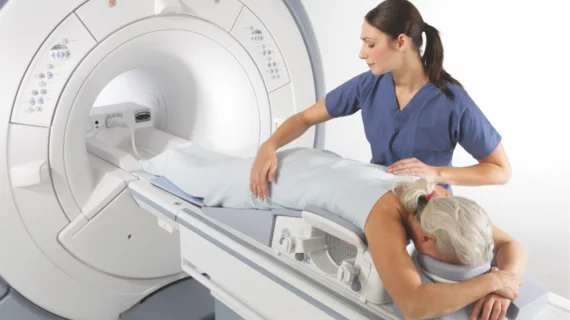MRI screening women with a family history of breast cancer a cost-effective intervention
Using magnetic resonance imaging to screen women ages 35-60 with a family history of breast cancer is a cost-effective intervention for radiology practices, experts assert.
Dutch scientists reached their conclusion by conducting an economic evaluation, using a simulator to estimate costs and lives saved across a cohort of 10 million women. They determined that using MRI to screen patients with a 20% or greater familial risk of breast cancer every 18 months does, in fact, make economic sense, based on thresholds established by the U.K.’s National Institute for Health and Care Excellence.
“This economic modeling study of data on Dutch women showed that the detection of more tumors at an early stage and fewer at a late stage by MRI could be a cost-effective method to reduce breast cancer mortality despite more overdiagnosis and higher costs in comparison with mammography,” H. Amarens Geuzinge, with Erasmus University Medical Center in Rotterdam, the Netherlands, wrote Thursday in JAMA Oncology.
The American Cancer Society recommends additional MRI screening for women with a lifetime risk of 20% or more for developing the disease, while the Netherlands and UK only advise for mammography screening. And guidelines urge radiologists to start the screening at a younger age in this population, but with youth, some individuals can present imaging challenges due to breast density, which MRI can alleviate.
Geuzinge and colleagues harnessed “microsimulation modeling” between February 2019 and May 2020 to conduct their experiment. They used cost estimates across a “lifetime horizon” from age 25 up until death among some 10 million Dutch subjects with that 20% or more familiar risk for breast cancer, without a known BRCA1/2 or TP53 variant.
Gauging various scenarios with different intervals of screening, the team found 18 months made most economic sense. Meanwhile, annual MRI scans brought the largest mortality reduction but at an incremental cost-effectiveness ratio that is higher than allowed by National Institute for Health and Care Excellence guidelines.
Downsides of greater MRI screening use, they added, include higher costs, more false-positive results and increased overdiagnosis. And hospitals may need to grapple with capacity issues, but the team believes this change in screening guidelines warrants further discussion.
“Currently, abbreviated MRI seems promising, which has shorter acquisition time and reading time while maintaining diagnostic accuracy,” the team added. “A less time-consuming MRI will decrease the price of the test, which has a favorable association with the ICER, as shown in our sensitivity analyses.”
Read more of the study in JAMA Oncology here.

